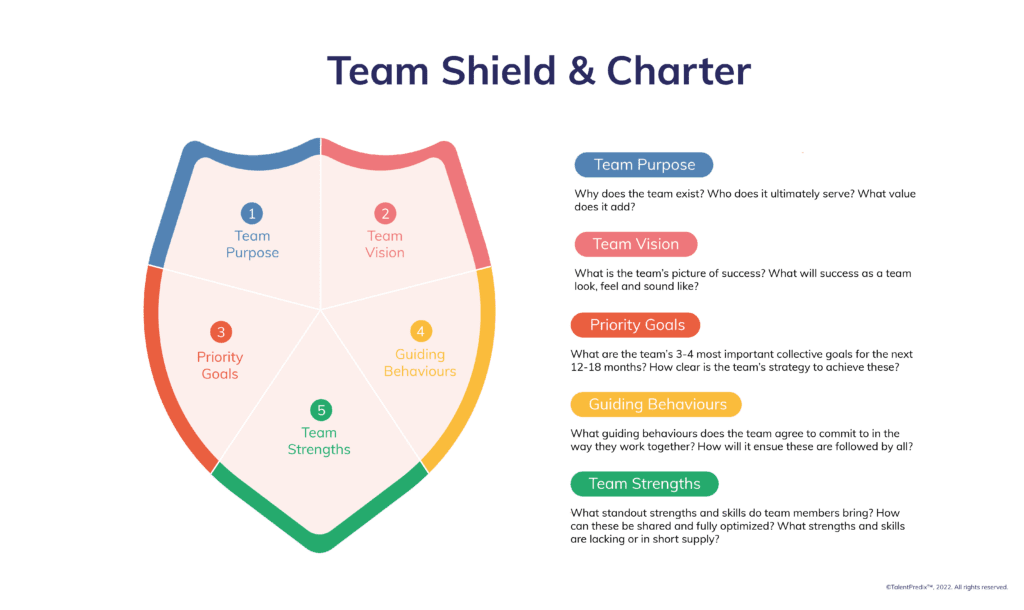Dear Danielle,
I would like to take this opportunity to welcome you as my successor as team leader for the Engineering team here at NetFlo.
It has been a great privilege to lead the team during the past 2 years. As I mentioned during your hiring process, the team has some formidable challenges ahead as the business scales and moves into new global markets. I thought it would be helpful to leave some guidance and principles that I’ve learned during my time in the role, having started as a new team leader myself. I understand of course that you will have your own aspirations, ideas, and style that you will be bringing to the role, however, I hope that this guidance may be useful to you as a relatively new team leader.
Provide clarity
As my mentor, Helen, always says “teams typically fail because the leader fails to provide clarity”. When I started, I wasn’t explicit enough about my aspirations and standards for the team. I also assumed roles were clear, but it turned out that they weren’t clear enough. This created uncertainty, confusion, and in-fighting early on. Fortunately, Helen helped me to understand that clarity is a prerequisite for high-performing teams. One exercise she had me do was to write down what I expected from the team as a whole and from each team member. I then shared these expectations with individuals and the team, inviting feedback on any areas that were still unclear. During 1-1s, I created SMART (specific, measurable, agreed, realistic and timebound) goals with each team member. The team did a similar exercise, during which we also clarified areas of responsibility. This flushed out several points of overlap and tension that we discussed and resolved together.
Give people something big and exciting to aim for
At the recent training I attended, we spoke a lot about the need to provide exciting and inspiring goals for the team. The trainer showed us an excellent video called “How Great Leaders Inspire Action” by a really inspirational speaker called Simon Sinek. This explains why it’s so important to provide a meaningful purpose for people to aim for. Helen added another concept that I love as it’s got a very memorable name. She says I need to ensure the team has a BHAG, a Big Hairy Audacious Goal! The team loved this concept and we have started exploring how we can create even more value for NetFlo’s customers by integrating the latest AI technologies into the platform. The team seem very excited about this opportunity.
We’ve started to discuss the idea of our purpose as a team, however, we haven’t completed this work so it’d be great if you could pick it up with the team. We are using a straightforward tool called a Team Shield & Charter that the trainer on my leader program shared with us. I’ve attached a copy of this below. I hope it’s as useful to you as it’s been to me.

Promote a safe environment of challenge and candour
About a year ago, Raj (my boss at the time) shared a fascinating article about the research Google did on the drivers of high-performing teams. They called this Project Aristotle, and you can read the piece here. They found that the most important factor behind great teams is what they called “psychological safety”. This sounds like a fancy concept but is actually quite straightforward. It involves creating a safe environment where team members feel they can express themselves candidly without having to worry about saying the wrong thing or feeling they are undermining their colleagues. Of course, creating such an environment is harder than it sounds but I have learned that the leader needs to set the tone. You can do this by ensuring all team members have an opportunity to have their say on important topics and encouraging them to be totally upfront about what they really think and feel. This takes time, particularly with quieter, more risk-averse team members. However, the more you encourage and promote candour and constructive challenge, the more they will trust the team and share openly.
Invest in developing and stretching team members
Megan, our Chief People Officer, is passionate about developing people. She has taught me a great deal about the importance of developing team members during my time with NetFlo. She helped me understand the importance of setting aside regular time to meet with team members to discuss their development goals and support them to find motivating pathways to achieve these. Each team member now has a personal development plan and I have met with them quarterly to discuss progress and ways I can help them develop. Megan advised me to do this as a separate process, outside my regular performance dialogues. This ensures there is dedicated time set aside to focus on everyone’s career and development priorities. I have also learned the importance of helping people cultivate a growth mindset, or the belief that abilities can be improved through hard work and continuous learning. I used to hate failure myself as I’m a bit of a perfectionist. However, I now understand that failure is an essential part of everyone’s growth journey. I have explained this to the team, and we have openly discussed our failures and what we have learned from them.
Another lesson I learned from Helen is that people relish challenge, provided it plays to their strengths and career motivations. Challenging people in areas they really aren’t energized by can cause negative feelings and demotivate them. I, therefore, try to create regular opportunities for team members to put their strengths and skills to the test in ways that are motivating for them. This encourages everyone to move beyond their comfort zone so they can continue to learn and become better.
Be like Yoda
I used to fall into the trap of what Helen calls the “illusion of expertise”. This happens when leaders feel they possess superior expertise and should have all the answers by virtue of their position. However, I have now learned (the hard way) that I cannot possibly know everything. The real expertise and know-how rests with my direct reports and the broader team. To get the best out of people, I now empower them using active listening, questioning, and coaching.
Powerful questions have become my leadership superskill, as they enable me to be a better coach, communicator, and influencer. They help me to draw out others’ ideas and perspectives about how to tackle challenges, deal with change and deliver on customer needs. By listening carefully rather than telling them what to do or trying to persuade them that my approach is best, I also get to better understand their problem-solving skills, ability to learn and potential.
Some particularly powerful questions I now regularly use with the team include:
Performance conversations
- What are you trying to achieve?
- What’s already going well that you can build on?
- What are the most energizing aspects of the task/role? And the least energizing?
- What new skills and capabilities can you develop to strengthen your performance?
- What challenges are you facing? What options do you have to overcome these?
- What weaker areas or beliefs are limiting your performance? How can you improve your effectiveness in these areas?
- What can I do to support you? What support do you need from others?
Problem-solving
- What is the best possible outcome?
- Who owns this problem?
- What are the options? What are the upsides/downsides of each?
- What criteria will you use to evaluate the options?
- What data do we still need to make a good decision?
- Do you need to decide this right now? What would you gain/lose by waiting?
During the leadership training, we learned to apply a coaching method called the GROW Coaching Model. GROW is a mnemonic for Goal, Reality, Options, and Way Forward (or Will). Apparently, it is the most widely used business coaching approach and I can see why! It’s easy to apply and very effective in helping people become better problem-solvers, overcome challenges, and take ownership for coming up with good solutions. I thought that coaching would be very time-consuming, however, I’ve found that with a bit of practice, coaching conversations can be quite efficient and save me time later. You’ll find a more detailed explanation of the GROW approach here.
A year or so ago, Helen encouraged me to practice coming up with new questions to use with the broader team every week. It’s been a fun challenge and based on my last 360-degree feedback survey, has made me a much better leader and coach.
Provide constructive feedback
I used to really struggle with tough feedback conversations. In fact, I always tried to avoid these conversations hoping that the problem would resolve itself. However, this tactic invariably led to the underperformance getting worse and resentment building among other members of the team.
During a training program last year, I learned a great new approach that I have been using with team members. It’s called the SBI (Situation, Behaviour, Impact) feedback method. It is relatively straightforward to apply although requires a bit of practice before you can use it effectively. Use the following questions to guide your feedback:
- In what situation did you observe the behaviour?
- What behaviour caused the positive or unfavourable outcome?
- What was the impact, for you, the team and business?
- If the behaviour needs to be improved, what alternative behaviour would you like to see?
Just remember to ensure you provide an opportunity for the person to respond to your feedback and commit to any change they want to make as a result.
You can also use this approach to give positive feedback so it’s super versatile which is one reason I like it so much.
Provide regular recognition and praise
Like many leaders, I am not very good at spotting and recognising effort and achievements in the team. After a very insightful feedback session with Raj, I realised the importance of giving regular recognition and praise. He taught me that everyone needs to feel valued and acknowledged, particularly those who are lacking in confidence or are new to the team. I am now learning the art of conscious observation to spot less obvious improvements in effort and behaviour, as well as more obvious achievements. I use my 1-1 check-ins and team meetings to recognise and acknowledge these successes using a variety of no and low-cost approaches, some of which you can find here. I also start each team meeting with a quick-fire round from each team member about the successes they have achieved since the last meeting before we dive in to talk about our challenges and problems. I find this lifts the mood in the room and raises our motivation and productivity during these meetings.
Encourage experimentation and adaptation
Given how fast everything is changing, I have encouraged the team to develop a growth mindset and be ready for change. To make this practical, the team has come up with the following ideas and principles that we now apply:
- Deliver one “moonshot project” every year – this needs to be ambitious, exploratory, and ideally ground-breaking. I invite team members to propose ideas for this project based on several criteria I give them, including the need for it to be related to the company’s strategic priorities and leverage emerging technologies.
- Regular learning reviews when tough problems arise and after big projects have been delivered to capture successes, challenges, and key learning.
- Monthly virtual 45-minute ‘lunch and learns’ where each team member prepares and delivers a learning topic of interest to the group.
- Voluntary peer coaching where people working on different projects choose to get together in smaller groups of 4-6 people for 2 hours a month to share their challenges and tackle them. We provide a straightforward structure and guidelines to the facilitators of these groups who we have trained in how to facilitate a peer coaching process effectively. However, the whole idea is for these groups to work through their challenges with their peers, so we try not to have any managers in these sessions.
- A fail-fast philosophy involving the team undertaking extensive prototyping and testing to see whether an idea is feasible. We encourage team members to capture and openly discuss failures and the learning from these on Basecamp and during team meetings so we can all improve the way we work and the software we produce.
Manage your energy and time skilfully
I could tell when we met that you are clearly enthusiastic to get started. To help you avoid the mistake I made at the beginning that almost caused me to burn out, I would like to caution you about the high workload and conflicting demands you will face in this role. It can easily become all-consuming if you don’t manage your workload and boundaries effectively. Raj is a great boss but can be very demanding at times. Managing 8 direct reports also requires a lot of time and mental energy. So, make sure you create clear work routines and boundaries from the get-go. Allow yourself enough time for thinking, building relationships, and learning, especially during the first 3-6 months, when you are still learning the ropes. To maintain your energy and well-being, you will also need to prioritise and protect time for holidays, rest, and to be with your family.
I will miss the team but know they’ll be in great hands with you as their new leader. I think your enthusiasm, experience with some of the latest technologies and great communication skills will enable you to do a great job. Please don’t hesitate to contact me if you want any additional insights or simply a sounding board to explore options and ideas. It’ll be great to stay connected.
Wishing you everything of the best,
Jim
Note: The company and all characters in the letter are fictional.
If you want help building peak-performing teams, contact us to arrange a meeting at info@talentpredix.com




